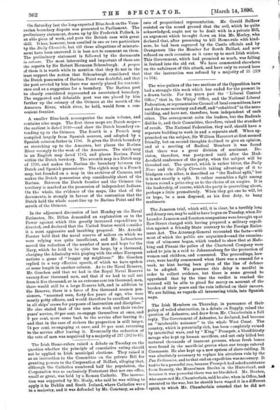A smaller Blue-book accompanies the main volume, and contains nine
maps. The first three maps are Dutch maps— the earliest is dated 1640—and show the Dutch boundary ex- tending up to the Orinoco. The fourth is a French map compiled largely from Spanish sources, and adopted by a Spanish mission-father in 1796. It gives the Dutch boundary as stretching up to the Amacura, but places the Bdrima River wrongly to the west of the Amacura. The sixth map is an English map dated 1783, and places Barima Point within the Dutch territory. The seventh map is a Dutch map of 1798, and makes the Barima the boundary between the Dutch and Spanish possessions. The eighth map is a French map, but founded on a map in the archives of Caracas, and makes the Dutch possessions stop considerably short of the Barima. Between the Dutch frontier and the Orinoco the territory is marked as the possession of independent Indians. On the whole, the evidence of the maps, like that of the documents, is stongly in favour of the contention that the Dutch held the whole coast-line up to Barima Point and the mouth of the Orinoco.






































 Previous page
Previous page